|
UFO FILES:
Brazil’s Roswell
The History
Channel, Sunday 12th March, 2006
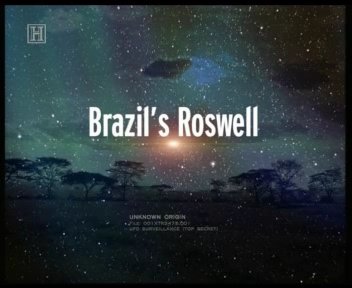
The History
Channel’s UFO Files continues to prove itself to be one of the best
UFO-based documentary series produced for many years. This week’s episode
explores the events in 1977 on an Amazonian island that the producers have
dubbed Brazil’s Roswell.
 Over
a period of months in that year, a sequence of events occurred that some
have said led, twenty years later, to the apparent suicide (some call it
murder) of Brazilian army captain, Uyrangê Hollanda. He was found hanging
from his bed, asphyxiated by a tie wrapped around his neck by his daughter
in 1997 just two months after giving an interview with Brazilian
ufologists about what he experienced on the island of Colares in the Pará
region of the country. Over
a period of months in that year, a sequence of events occurred that some
have said led, twenty years later, to the apparent suicide (some call it
murder) of Brazilian army captain, Uyrangê Hollanda. He was found hanging
from his bed, asphyxiated by a tie wrapped around his neck by his daughter
in 1997 just two months after giving an interview with Brazilian
ufologists about what he experienced on the island of Colares in the Pará
region of the country.
The superstitious
people of Colares are simple fishermen and their families for the most
part, not primitive by any means, but somewhat isolated from the bustling
cities only a few hours drive away. Beginning in September of 1977, a
technology beyond the ken of even the most sophisticated city-dweller
visited this tranquil location.
Emidio Campos
Oliveira was settling down to sleep on a warm night in October. Suddenly,
a bright light penetrated the roof of his house and burned his thigh
before vanishing as quickly as it had appeared.
Several days
later, Orivaldo Malaquias Pinheiro was net fishing on the beach with a
friend. A bright light began approaching them from the sea and, afraid,
they ran. On telling others about their experience, it became clear that
dozens of people had witnessed something similar, with some saying that
they had been chased and attacked by the lights.
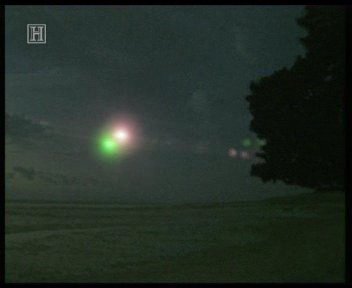 Lucia
Helena Marques was a twenty-five year old dentist at the time and she
recounted how she and others at the market she was visiting saw strange
lights moving erratically out to sea. The lights were mostly red, but
green and yellow ones were also visible. Then they simply vanished. Lucia
Helena Marques was a twenty-five year old dentist at the time and she
recounted how she and others at the market she was visiting saw strange
lights moving erratically out to sea. The lights were mostly red, but
green and yellow ones were also visible. Then they simply vanished.
A journalist in
the nearby city of Belém, Carlos Mendes, began receiving phone calls from
the witnesses in Colares suggesting that his newspaper should visit the
island and see the lights that were making the population so
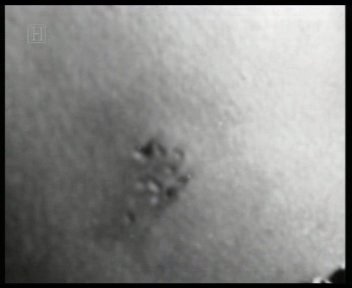 afraid.
Mendes and his photographer set out to the island and heard the stories of
the locals. The photographer took images of marks on the skin that
witnesses said were caused by the lights. One woman had been paralysed by
the lights and the next day found a group of puncture marks that looked
like they had been made with a pin on her chest. Some even said that they
thought the lights were sucking their blood! afraid.
Mendes and his photographer set out to the island and heard the stories of
the locals. The photographer took images of marks on the skin that
witnesses said were caused by the lights. One woman had been paralysed by
the lights and the next day found a group of puncture marks that looked
like they had been made with a pin on her chest. Some even said that they
thought the lights were sucking their blood!
Mendes never saw
the lights for himself, but he appreciated how scared the local people
were. Over the next few months, over eighty people would report being
attacked by the paralysing beams of light from space. Things got so bad
that many of the women and children left the town, while some of the men
stood guard around bonfires. Others locked themselves in their homes,
fearful of the mysterious invaders from above.
 Doctor
Wellaide Carvalho was the young local physician and had only been on the
island for six months. During the time of the attacks, she saw a sharp
increase of patients complaining of injuries caused by the lights.
Initially sceptical and at first believing that the town was gripped with
mass hysteria, Dr Carvalho found that each patient suffered from the same
symptoms – signs of radiation burns and odd puncture marks, usually in the
chest and thigh areas. Doctor
Wellaide Carvalho was the young local physician and had only been on the
island for six months. During the time of the attacks, she saw a sharp
increase of patients complaining of injuries caused by the lights.
Initially sceptical and at first believing that the town was gripped with
mass hysteria, Dr Carvalho found that each patient suffered from the same
symptoms – signs of radiation burns and odd puncture marks, usually in the
chest and thigh areas.
One night, a
woman was brought in and her family explained that she had been attacked
by the lights. She was suffering from spasms, her mouth was clenched shut
and Dr Carvalho could not get her to respond to stimuli. Unable to
stabilise her patient, the doctor could do nothing but have the patient
bundled into a car and driven to the regional hospital in Belém.
Five days later,
as she waited for a report on the progress of the woman, another patient
was brought in, another victim of the lights. She had been attacked whilst
standing in her garden. She was so completely rigid that the police
officers that had brought her in their car had been forced to drive her
there with her legs sticking out of the door. This patient was also sent
to the city hospital.
Shortly
afterwards, Dr Carvalho received word from Belém that both patients had
died. She requested that a cause of death be ascertained, but the report
came back, giving no explanation for how the women had died. The young
doctor still did not believe that the women had died because of an attack
by these supernatural lights, but that the panic that had gripped the town
had brought on a heart attack or stroke in both patients.
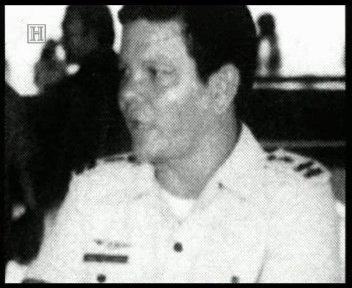 Hoping
to put an end to the hysteria, Carvalho and other town officials pleaded
with the mayor for help. A request went out for the Regional Air Command (COMAR)
to look into what was happening on Colares. Heading up the investigation
was Captain Uyrangê Hollanda. Hoping
to put an end to the hysteria, Carvalho and other town officials pleaded
with the mayor for help. A request went out for the Regional Air Command (COMAR)
to look into what was happening on Colares. Heading up the investigation
was Captain Uyrangê Hollanda.
Carlos Mendes
suspected that the government assigned COMAR to
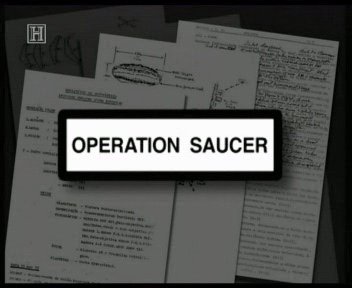 investigate
the island was because it believed that communist guerrillas were behind
the attacks. The rebels had been active in the state for some time.
Despite this mundane reason behind Captain Hollanda’s investigation, it
was assigned a curious name – Operation Saucer. investigate
the island was because it believed that communist guerrillas were behind
the attacks. The rebels had been active in the state for some time.
Despite this mundane reason behind Captain Hollanda’s investigation, it
was assigned a curious name – Operation Saucer.
The team arrived
on Colares and set up camp. They placed cameras on the beaches and ensured
that the locals saw everything that they were doing, in the hope that
seeing this would calm their fears. Their efforts were in vain, however.
Hollanda met with Dr Carvalho and instructed her that she should tell
everybody that all that was at work on Colares was mass hysteria and
nothing more. From that point, the doctor knew that the investigation was
not to find the truth, but to hide it. She refused to cooperate, saying
that she would not lie to her patients.
Carvalho’s
scepticism about the cause of the injuries changed when she had an
encounter for herself. She was walking home one evening when she saw a
woman faint. As she tended to her, her attention was drawn to a bright
light in the sky. She saw a cylindrical object of a colour that she could
not describe. Transfixed, she watched it move in an elliptical manner.
Unknown to her, at the same time, a radar station set up on the beach by
the COMAR team picked up the object. As they rushed to focus their cameras
and telescopes on the object, it headed out to sea and vanished.
Over a four month
period, Hollanda’s team took over five hundred photographs and fifteen
hours of film footage, depicting strange lights in the sky. They drew
diagrams of what they had seen and made out reports, which were sent back
to COMAR headquarters in Brasilia.
At the end of
December 1977, the order came to wrap up Operation Saucer. Hollanda’s team
packed up and left Colares and their reports have never been made public.
Over the
following months, the sightings and attacks diminished and eventually
became nothing more than a local legend. Operation Saucer was forgotten
about until 1997.
 That
year, Hollanda contacted Brazilian ufologists, AJ Gevaerd and Marco Petit.
They travelled to Rio de Janeiro, where they filmed an interview with the
former air force officer. Over two days, he gave an astonishing account of
what his team saw during their time on Colares. That
year, Hollanda contacted Brazilian ufologists, AJ Gevaerd and Marco Petit.
They travelled to Rio de Janeiro, where they filmed an interview with the
former air force officer. Over two days, he gave an astonishing account of
what his team saw during their time on Colares.
He described
brightly-lit craft in the sky, some of which were over a hundred metres
across and making sounds like the thrum of an air-conditioning unit and
also clicking noises. He described three encounters and produced drawings
of what he had seen, depicting cylindrical, saucer-shaped and triangular
craft.
His final
encounter included a visit from one of the occupants of the craft while he
was in bed. He said there was a bright flash and suddenly, he felt the
creature hugging him from behind. It was a metre and a half tall, wearing
some sort of mask that hid its features and a suit that reminded him of
something an astronaut or diver might wear. Then it spoke to him in
Portuguese, but in a metallic, computer-like voice:
“Take it easy. We
are not going to do you any harm.”
Then it vanished.
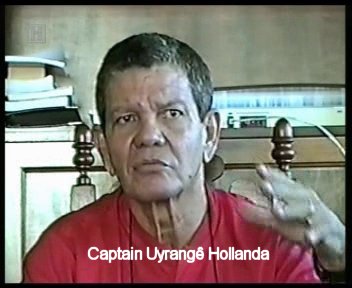 Hollanda
then claimed that he had an object implanted under the skin of his left
arm. As he demonstrated, something solid, yet flexible could be clearly
seen beneath the surface. He claimed the alien had placed it there and an
x-ray had shown nothing. Hollanda
then claimed that he had an object implanted under the skin of his left
arm. As he demonstrated, something solid, yet flexible could be clearly
seen beneath the surface. He claimed the alien had placed it there and an
x-ray had shown nothing.
Two months later,
Hollanda was dead. Despite having a history of mental illness and previous
suicide attempts, some who knew him said that he could not have killed
himself. His co-pilot during Operation Saucer, Pinon Friás, said that
Hollanda would never have tied a rope around his neck and hanged himself.
Gevaerd disagreed, saying that the captain had been depressed, but that
his story proved that something went on at Corales and the Brazilian
government knew all about it.
In 2004, Gevaerd
and Petit fought and won a case to be allowed access to the Operation
Saucer files. They found the sketches, reports and photographs taken by
Hollanda’s team, however, they claimed that not all the documents were
made available to them. Of the hundreds of photographs and reports that
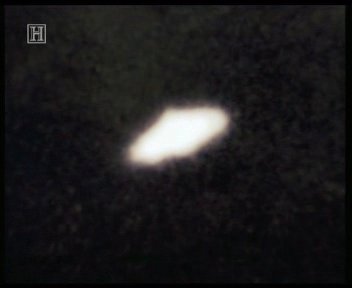 were
filed, they were shown only a hundred and ten photos and two hundred
documents, nor were they allowed to view the film footage shot by the
team. The reports they saw, though, were astonishingly detailed and
comprehensive, yet they made no attempt to explain the sightings nor did
they debunk them. The photos they saw were also puzzling, showing odd
lights in the sky. were
filed, they were shown only a hundred and ten photos and two hundred
documents, nor were they allowed to view the film footage shot by the
team. The reports they saw, though, were astonishingly detailed and
comprehensive, yet they made no attempt to explain the sightings nor did
they debunk them. The photos they saw were also puzzling, showing odd
lights in the sky.
Officially,
Operation Saucer found nothing that can be explained scientifically and
that was as far as the Brazilian government would go with regard to the
events of 1977. It would be up to independent researchers to try and find
their own answers.
Doctor Daniel
Rebisso is a ufologist intrigued by the reports of burns and puncture
marks inflicting the victims of the Colares lights. He dismissed the
theory that the marks were the result of vampire bats, explaining that
bats leave completely different wounds when they feed. He also found the
theory that what happened was down to mass hysteria and self-mutilation to
be wanting. Rebisso also looked into claims that the lights were some form
of psychological warfare by the communist guerrillas, in an attempt to
frighten away the locals so that weapons could be brought in for their
cause. This could neither be confirmed nor denied.
He came to the
conclusion that some form of radiation paralysed the victims’ nervous
systems and the lights extracted something from their bodies. Marco Petit
seemed to agree, suggesting that material was taken so that the aliens
could produce vaccines that would protect them against earthly viruses
once open contact is finally made.
Whatever happened
on Colares, and the files opened by the Brazilian Air Force seem to
confirm that something happened and was not only reported, but also
captured on film, it is another little-known case brought to mainstream,
public light by the increasingly excellent UFO Files. Whether it
should be called ‘Brazil’s Roswell’ is another matter. The case bears
little resemblance to those events of 1947 and the incident in Varginha in
1996 would likely fit the ‘Roswell’ label better. Perhaps UFO Files
will cover this important case at some point?
The images used
are the property of the copyright holders and are only used here for
review purposes.
© Steve Johnson -
2006 |